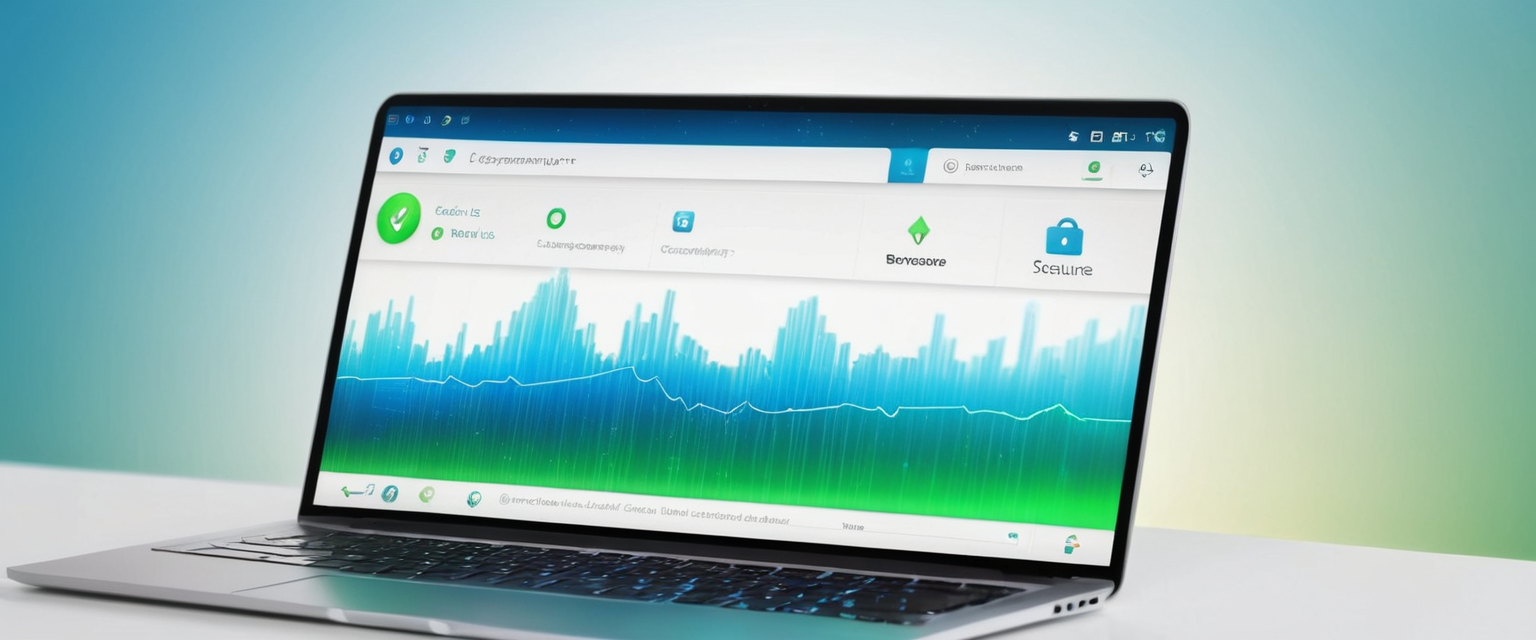
In an increasingly digital world where the web browser has become the primary gateway to online work and communication, establishing robust safe download habits represents one of the most critical cybersecurity practices for both individuals and organizations. This comprehensive analysis examines how users across all major browsers—including Chrome, Firefox, Safari, Edge, and emerging privacy-focused alternatives—can implement effective strategies to prevent malware infections, avoid ransomware attacks, and maintain comprehensive virus protection while downloading files from the internet. The intersection of browser security technologies, user behavior, and protective tools creates a multi-layered defense system that, when properly implemented, can substantially reduce the risk of compromise through malicious downloads, drive-by infections, and file-based attacks that have become increasingly prevalent in enterprise and consumer environments alike.
Understanding the Browser Download Threat Landscape
The modern threat landscape has fundamentally transformed the way cybersecurity professionals and everyday users must approach file downloads, with malware and ransomware increasingly leveraging the browser as the primary attack vector. Malware, or malicious software, encompasses any program or file intentionally designed to harm a computer, network, or server, including computer viruses, worms, Trojan horses, ransomware, and spyware. These malicious programs steal, encrypt, and delete sensitive data while simultaneously altering or hijacking core computing functions and monitoring end users’ computer activity. The significance of this threat cannot be overstated, as ransomware attacks have evolved from simple encryption requests to sophisticated multi-stage operations employing adaptive and evasive tactics specifically designed to bypass traditional security tools and infiltrate endpoints through browser-based initial access vectors.
According to recent analysis, business users spend more than seventy-five percent of their working day inside the web browser, a dramatic shift in digital transformation that has transferred critical work from data centers to the browser environment. This concentration of activity within browsers has created an attractive target for malicious actors who have specifically crafted attacks designed to exploit the browser as an entry point for installing malware and ransomware payloads. The SocGholish ransomware threat exemplifies this trend, utilizing social engineering techniques to masquerade as popular software updates such as Chrome and Adobe, subsequently uploading malicious ZIP files through hidden iFrames that deploy Dridex Banking Trojans or Wasted Locker ransomware variants. The problem extends to drive-by downloads, which involve the involuntary downloading of malicious code, files, or software onto a computer or mobile device without user awareness or explicit consent. These attacks can occur through seemingly innocuous interactions such as clicking the close button on pop-up advertisements, visiting compromised websites, or inadvertently triggering downloads through website content that exploits browser vulnerabilities.
The risks associated with forgoing comprehensive download protection are substantial and multifaceted, extending far beyond the initial infection event. Data loss or theft represents the most immediate consequence, as malware is specifically designed to steal sensitive information including personal details, financial information, intellectual property, and login credentials that can subsequently be used for identity theft, financial fraud, or sold on dark web marketplaces. Financial loss compounds these concerns through business disruption, operational downtime, and revenue loss, while ransomware specifically demands payment for releasing encrypted files and systems. The cascade of damage continues through system disruption and downtime that degrades productivity, reputation damage that erodes customer trust, intellectual property theft that undermines competitive advantage, compromised security that creates perpetual breach cycles, network compromise that spreads infections laterally across multiple systems, botnet formation that weaponizes compromised devices, and legal risk stemming from regulatory violations and data protection law breaches.
Browser-Native Download Security Features and Mechanisms
Modern web browsers have implemented increasingly sophisticated mechanisms to protect users from dangerous downloads, though the effectiveness of these protections depends substantially on user configuration, browser selection, and understanding of how these features function. Google Chrome automatically blocks dangerous downloads and protects devices and accounts from malware and viruses through its Safe Browsing system. Chrome’s download protection operates through multiple classification systems that categorize files by danger level, including “NOT_DANGEROUS” classifications that allow unrestricted downloads, “ALLOW_ON_USER_GESTURE” classifications that permit downloads only when users have initiated them through explicit clicking or command actions, and “DANGEROUS” classifications that require immediate warning and cannot be downloaded without explicit user override. When Chrome blocks a download, it does so based on one of several risk categories: files flagged as dangerous or malicious by Safe Browsing servers, files flagged as uncommon or unfamiliar, files that may attempt to evade detection through archive files like ZIP or RAR formats with password protection, or files downloaded over insecure connections. The browser also implements enhanced protection modes that allow users to send suspicious files to Google Safe Browsing for additional security checks, with password-protected archive files being scanned locally without transmission of the file contents or password to Google’s servers.
Mozilla Firefox provides comprehensive deceptive content and dangerous download protection through its built-in security mechanisms that block potential malware and content designed to trick users into downloading malware or accidentally entering sensitive information. Firefox’s approach integrates Enhanced Tracking Protection that blocks known trackers gathering information about online activity, Total Cookie Protection that isolates cookies to prevent cross-site tracking, DNS-over-HTTPS that encrypts domain name queries, and fingerprinting protection that warns against browser-based profiling attempts. The browser’s security features specifically include phishing and malware protection that warns users when pages have been reported as deceptive sites, unwanted software sources, or attack sites designed to harm computers, combined with Firefox Monitor that alerts users when their online accounts have been involved in known data breaches. Firefox’s download warnings prominently display when users attempt to download potentially dangerous files, blocking suspicious content and infected files while providing clear notification in the Downloads panel when a download has been prevented.
Microsoft Edge implements File Type Policies that classify files by their level of “dangerousness” to manage downloads with precision and user awareness. Edge’s approach inherits most file type policies from the upstream Chromium browser but includes modifications for security or compatibility reasons, with each file type assigned a danger level classification of “DANGEROUS,” “NOT_DANGEROUS,” or “ALLOW_ON_USER_GESTURE”. The distinction between these classifications determines whether downloads proceed automatically or require user intervention, with “ALLOW_ON_USER_GESTURE” files requiring both a clear user gesture such as a direct click on a download link and a recorded prior visit to the referring origin occurring before the most recent midnight to proceed automatically. Edge provides administrators with granular control through the ExemptFileTypeDownloadWarnings policy that allows specified file types to download from particular domains without interruption, while the DownloadRestrictions policy enables comprehensive control over what types of files can be downloaded. Additionally, Edge’s integration with Microsoft Defender SmartScreen provides warnings about insecure or malicious websites and protects against typo-based phishing attacks by ensuring users are visiting the correct URLs.
Safari, Apple’s browser integrated across macOS, iOS, and iPadOS ecosystems, emphasizes on-device processing and privacy protection through features that prevent tracking and fingerprinting while maintaining security standards. Safari’s architecture integrates deep WebKit integration with hardware to deliver fast performance while supporting modern web standards, with privacy features designed from inception rather than as afterthoughts. The browser’s approach to security emphasizes private browsing modes that automatically wipe browsing information upon logout, built-in password managers, and protections against cross-site tracking and fingerprinting attempts. Apple’s commitment to privacy-first design extends to Apple Intelligence features that prioritize on-device processing whenever possible, using Private Cloud Compute only when necessary and only with cryptographic assurances that data transmitted to Apple servers remains inaccessible to Apple.
Browser extensions and add-ons, while providing valuable functionality, represent a significant security vulnerability that deserves particular attention in the context of safe download habits. Browser extensions are increasingly popular vehicles for threat actors because they provide access to vast amounts of sensitive information while benefiting from the trust users typically place in downloaded add-ons, particularly when obtained from official browser stores. A risk assessment of 300,000 browser extensions and third-party OAuth applications used in corporate environments revealed that fifty-one percent of extensions were classified as high risk and could potentially cause extensive damage. Malicious extensions can steal data including usernames, passwords, browsing history, session cookies that enable account hijacking without requiring passwords, and financial information, either by selling this data on dark web marketplaces or using it directly to commit identity fraud and account takeovers. Beyond data theft, malicious extensions direct users to malicious or risky websites harboring malware, inject unwanted advertisements and potential malware into browsing experiences, backdoor browsers for future access and control, and mine cryptocurrencies without user knowledge. The most dangerous aspect of extension-based threats involves their ability to evade security detection through legitimate-appearing extensions that activate malicious payloads only after installation, or through acquisition of previously legitimate extensions that then serve malicious updates to entire user bases.
Pre-Download Security Practices and Source Verification
Establishing safe download habits begins long before files reach the computer, with critical decision-making occurring at the point of download source selection, website security verification, and threat assessment. The most fundamental pre-download security practice involves downloading software and files exclusively from reputable, trusted sources that have implemented proper security measures and maintain transparency about their legitimacy. Official websites, official application stores including Google Play and Apple App Store, and established trusted repositories represent the safest download sources, while downloads from random websites, third-party sources, suspicious pop-up advertisements, and unfamiliar download sites should be avoided entirely. The prevalence of compromised legitimate websites serving drive-by downloads complicates this landscape, as reputable websites can be hijacked to serve hidden malicious code to unsuspecting visitors. Additionally, “cracked” or “pirated” versions of paid software frequently bundle malware and should be completely avoided in favor of legitimate software or open-source alternatives.
Website security verification represents an essential pre-download step that directly impacts the security of downloaded files. Users should verify that websites use HTTPS (Hypertext Transfer Protocol Secure) encryption rather than HTTP, which can be identified by looking for a padlock icon in the address bar and checking that the URL begins with “https://”. While HTTPS encryption adds security by preventing third parties from intercepting transmitted data, it does not guarantee that websites are legitimate or that downloads are safe, as scammers can obtain HTTPS certificates for fraudulent sites. Users should examine website characteristics including the presence of official logos, proper contact information, professional website design, and absence of spelling errors or suspicious elements that might indicate phishing attempts. Digital signatures and certificate verification provide additional authentication methods, with Apple software exemplifying best practices by requiring verification of digital signatures matching specific SHA-256 fingerprints before installation.
URL examination and careful navigation represent critical elements of safe downloads that prevent falling victim to typo-squatting attacks where malicious actors register domain names that closely resemble legitimate ones, differing by only a single letter or character. Users should avoid clicking on URLs provided in unsolicited emails or messages, instead navigating directly to official websites using browser favorites, conducting web searches for official sites, or obtaining phone numbers from official sources rather than from potentially malicious messages. The practice of hovering over links before clicking reveals the true destination URL in a preview, allowing users to verify that the URL matches the claimed destination rather than redirecting to malicious sites. Phishing emails often employ social engineering techniques creating false urgency that pressures users into hasty decisions without proper consideration or verification, employing threats of penalties or promises of rewards as motivation.
Email attachment evaluation requires particular care, as email remains a common vector for malicious code distribution through attachments that may appear to come from legitimate sources but harbor hidden malware payloads. Users should confirm sender email addresses and remain cautious of unanticipated or suspicious emails, never opening attachments or clicking links in emails from unknown sources. Email filtering and anti-phishing tools including MailWasher Pro, RSA FraudAction, and Avanan can provide advanced email filtering capabilities when available, blocking many phishing attempts before they reach user inboxes. Organizations should implement advanced email filtering that blocks macro-enabled attachments, enforces explicit email authentication protocols, and provides user training on recognizing phishing attempts through realistic simulations targeting roles such as finance and HR professionals that are frequently targeted by business email compromise attacks.
Antivirus Software and Comprehensive Download Protection Systems
While browser-native download protections provide important first-line defense mechanisms, comprehensive virus protection requires deployment of dedicated antivirus and anti-malware software that provides layered detection capabilities beyond browser-level controls. Antivirus software serves as essential cybersecurity tools that detect and remove malicious software from computers, devices, and networks, providing the foundation for comprehensive protection strategies. The risks of forgoing antivirus protection extend to every category previously discussed, with the primary risk being opening digital doors for malware infection and creating pathways for ransomware deployment. Installing comprehensive antivirus solutions represents a best practice and requirement according to the Cybersecurity and Infrastructure Security Agency (CISA), with regular validation and installation of security patches and updates being essential components of effective cybersecurity hygiene.
Enterprise-grade antimalware tools have evolved to provide multifaceted protection against the complete spectrum of malware threats including ransomware-specific protections. Bitdefender GravityZone offers an intuitive risk analysis engine that protects against malware attacks while ensuring adherence to corporate protocols including patch management, disk encryption, and device control. Cisco Secure Endpoint, formerly known as Cisco AMP for Endpoints, employs advanced threat detection techniques including machine learning and behavioral analysis to identify and block malware, ransomware, and other malicious activities in real time. ESET Protect provides endpoint protection against various threats including malware, ransomware, and viruses, while F-Secure Total offers a comprehensive internet security suite combining internet security, VPN, and password management in unified subscriptions. Kaspersky Premium provides endpoint protection with automated threat removal and VPN services, while Sophos Intercept X uses a combination of signature-based detection, machine learning, and behavioral analysis to proactively identify and block malware and ransomware before they can cause harm. ThreatDown Endpoint Protection, formerly Malwarebytes Endpoint Protection, offers a layered protection approach with simplified security management and scalability options for IT organizations. Webroot Managed Detection and Response provides proactive defense against evolving threats through continuous monitoring and expert analysis.
The selection of appropriate antivirus software requires careful evaluation of multiple criteria to ensure effective protection without degrading system performance. Detection effectiveness rate represents the fundamental measure of antivirus capability, requiring evaluation of independent test results from organizations like AV-Test or AV-Comparatives that conduct rigorous performance evaluations. Modern security features should include real-time scanning capabilities that monitor file systems and downloads continuously, firewall protection that controls network traffic, email scanning that inspects incoming messages and attachments, and automatic updates that ensure antivirus definitions remain current with emerging threats. Additional features that enhance protection include password managers that secure credential storage, VPN services that encrypt network traffic, and parental controls that protect children from malicious content. System impact evaluation involves assessing whether the antivirus software introduces resource-intensive overhead that slows computer performance, as some antivirus programs consume substantial CPU and memory resources while others operate with minimal system impact. Ease of use, compatibility with business systems and applications, cost considerations, customer support quality, vendor reputation, and availability of trial versions all influence the selection of appropriate antivirus solutions.
No antivirus software provides one hundred percent security guarantees, necessitating complementary practices including proper cybersecurity hygiene, regular operating system and software updates, cautious email attachment handling, and avoidance of suspicious websites. When antivirus tools fail to completely remove malware infections, manual system inspection of files, folders, registry entries, and startup items may become necessary, though such manual removal should be cautiously attempted to avoid accidental deletion of critical system files. Severely infected devices may require system restoration through data recovery software that retrieves lost or corrupted files from backup copies created before infection occurred.

Advanced Browser Security Technologies and Download Isolation
Contemporary approaches to browser security have evolved to employ advanced technologies that isolate browser activity from the underlying operating system and network infrastructure, providing robust protection against malware execution and ransomware deployment. Browser sandboxing represents a critical security technology where applications, web browsers, or code pieces are isolated inside safe environments against external security threats. Web browser sandboxing allows running web applications in isolated environments to prevent browser-based malware from spreading to networks, containing malicious code within restricted boundaries where its potential to damage systems is substantially limited. Sandboxing functions by limiting the scope of action for code to only the permissions required for functionality, preventing additional permissions that could be abused by malicious actors. Most modern browsers already implement sandbox environments, with Firefox running untrusted code in sandboxed environments where processes are restricted to accessing limited system resources and cannot view webcams or read local files without explicit permission. Had websites not been sandboxed and isolated from operating systems, visiting any malicious website would be equivalent to directly installing viruses, making sandboxing one of the most important security innovations in modern browser architecture.
Two primary browser isolation techniques have emerged for enhanced protection: local browser isolation and remote browser isolation. Local browser isolation operates by running browsers in containers or virtual machines that provide isolated environments serving as protective barriers between external web threats and user machines connected to corporate networks. Virtual browsers run websites in isolated environments, with the fundamental principle that if users visit malicious sites or download malicious files, these threats cannot reach the endpoint because they exist entirely within the isolated container. Virtual browsers significantly improve security and enable organizations to leverage old and unsupported browser versions without exposing systems to unpatched vulnerabilities. Remote browser isolation involves running browsers on organization-hosted or cloud-based servers, allowing users to browse internet content in cloud-based environments where threats exist in isolation from local infrastructure. While remote isolation is expensive due to the resource allocation required for running large volumes of containerized browsers, third-party providers can offer cost-effective solutions through shared infrastructure models.
Menlo Security’s approach exemplifies advanced browser security architecture through its Secure Cloud Browser that executes all web sessions and active content in secure web browsers located in the cloud. By isolating browser activity away from endpoints, this approach ensures that no ransomware or evasive malware can gain initial access to devices, rendering attacks useless before they reach vulnerable systems. Menlo Security’s technology functions as the only solution capable of identifying and dynamically stopping evasive malware, zero-day exploits, and ransomware attacks through real-time behavioral analysis and threat detection. Browser security platforms such as Seraphic Security, LayerX Security, and Menlo Security provide enterprise-grade protection by seamlessly embedding Zero Trust security principles into browser environments. Seraphic Security enforces granular, identity-aware policies in real time without requiring users to switch from their preferred browsers, governing file downloads, clipboard access, extension usage, and other critical functions. This agentless approach works without endpoint agents or traffic rerouting, enabling rapid deployment across managed and unmanaged devices with minimal overhead.
Download-Specific Behaviors and File Handling Best Practices
Developing consistent safe download behaviors represents an essential foundation for comprehensive virus protection, with specific practices proven to substantially reduce malware infection risk and ransomware exposure. Users should download files exclusively from trusted sources, verify the authenticity of sources before download, and read user reviews and ratings before downloading software to gain insights into performance, reliability, and potential security issues. Before downloading, checking file reputation through online searches and review sites provides valuable threat intelligence, while ensuring antivirus software is up to date and performing regular scans on downloaded files provides verification that downloaded content has not been compromised. The practice of using custom installation instead of default settings when installing software allows users to review and deselect additional software or toolbars that may be bundled with programs, while reading End User License Agreements, though tedious, provides critical information about data collection practices and third-party agreements.
File downloads should never be stored permanently in default Downloads folders, as these temporary areas lack automatic backup integration with cloud storage services such as OneDrive that protect critical folders like Documents, Desktop, and Pictures. The Downloads folder represents a security liability because files can be easily lost in clutter, no backup exists if computers crash, and accidental deletion when clearing folder space can result in permanent data loss. Instead, users should organize files into dedicated folders within Documents or Desktop directories, leveraging OneDrive for automatic backup through Microsoft 365 subscriptions, or implementing SharePoint for team document management that centralizes documents, enables secure collaboration, and manages permissions effectively.
Pop-up advertisements and unsolicited download prompts require particular vigilance, as clicking on pop-up close buttons or responding to pop-up content can inadvertently trigger malware downloads. Browsers such as Google Chrome and Mozilla Firefox offer built-in options to block pop-ups and redirects through Settings menus, while third-party tools like the StopAll Ads browser extension help block ads and prevent tracking while allowing users to set ad filters for approved websites. Beyond pop-up blocking, users should exercise extreme caution regarding free software offers, especially those promising cash prizes or chances to win free software in exchange for downloading products or filling out forms, as these frequently represent traps designed to lure unsuspecting users into downloading unwanted programs. Beware of offers that seem too good to be true, always searching the internet to confirm offer legitimacy and visiting official websites to obtain accurate information.
Password-protected archive files including ZIP and RAR formats require special attention due to their ability to conceal malware while evading detection systems. When attempting to download suspicious password-protected files, Chrome may request password entry to allow Safe Browsing to scan the file contents, with both files and passwords remaining on local devices rather than being transmitted to Google servers. This local scanning approach allows verification of file safety without compromising sensitive password information, with Chrome blocking downloads identified as dangerous while notifying users that scans found no malware for files that pass verification.
Ransomware Prevention Through Safe Download Practices
Ransomware prevention represents a critical application of safe download habits, as ransomware attacks consistently begin with gaining initial access through browser-based vectors including phishing, drive-by downloads, and malicious attachments. Ransomware has evolved from simple encryption requests to sophisticated multi-stage operations that employ adaptive evasive tactics specifically designed to bypass traditional security tools. The SocGholish ransomware threat exemplifies this sophistication, using social engineering to masquerade as popular software updates, subsequently downloading additional malware and deploying Dridex or Wasted Locker ransomware variants after users click seemingly legitimate update prompts. The best approach to stopping ransomware involves preventing initial access on the endpoint through advanced browser security solutions that execute web sessions and active content in secure cloud browsers, isolating activity from endpoints to ensure that ransomware and evasive malware cannot gain initial access.
A multi-layered ransomware prevention strategy incorporates multiple complementary approaches that address the complete attack chain. Preventing initial access requires hardening remote access by disabling unused RDP and VPN access, mandating multi-factor authentication, enforcing session timeout and logging, and implementing phishing resistance through staff training using realistic phishing simulations, email filtering, and blocking of macro-enabled attachments. Patch hygiene requires automating patch deployment for critical systems, especially VPN appliances, Active Directory, web servers, and operating systems, with patching occurring as soon as possible to address high-severity and critical vulnerabilities. Secure identity and access controls involve limiting admin rights even for IT staff, implementing role-based access control with explicit permissions, and storing backup or encryption keys and service credentials in secure vaults with audit trails and MFA gating. Network segmentation separates backup infrastructure networks from production systems and isolates backup storage to reduce risk from lateral compromise.
The 3-2-1-1-0 backup rule provides a proven framework for ransomware resilience by maintaining three copies of data on two different media types with one copy off-site, one copy immutable or offline, and zero backup recovery surprises through regular testing. This approach ensures that even when ransomware encrypts primary data and backup systems, organizations retain clean recovery points that cannot be compromised by malware. Immutable storage and segregated access controls prevent ransomware from deleting, encrypting, or exfiltrating backups, while malware scanning on restore points ensures data integrity during recovery.
Browser-Specific Implementations and Privacy-Focused Alternatives
Different browsers implement distinct security philosophies and technologies that users should understand when selecting and configuring browsers for safe downloads. Firefox’s comprehensive privacy and security approach provides Enhanced Tracking Protection that blocks known trackers, Total Cookie Protection that isolates cookies by website, DNS-over-HTTPS that encrypts domain lookups, and fingerprinting protection that warns against browser profiling. Firefox’s security features include phishing and malware protection that warns about deceptive or attack sites, Firefox Monitor that alerts about known data breaches, and HTTPS-Only mode that forces encrypted connections. The Mozilla Foundation’s non-profit status means Firefox has no financial incentive to sell personal data, making privacy protection a core organizational value rather than a compromise with commercial interests.
Brave Browser represents a privacy-first alternative built on Chromium that blocks third-party ads and tracking by default across all websites, preventing the unwanted ad delivery and tracking that slows browsing and consumes bandwidth. Brave blocks videos ads, search ads, social media ads, and other unwanted content while simultaneously blocking the annoying “Accept cookies?” pop-ups that clutter websites, resulting in websites loading three to six times faster than standard browsers. Brave includes built-in security with no dials to turn or extensions to configure, functioning securely right out of the box, and includes Brave Firewall plus VPN that encrypts every connection and protects entire devices even outside the browser. Brave Search provides a private, independent search engine that doesn’t profile users or collect personal data, offering fast accurate results from its own index.
Tor, known as The Onion Router, represents the most extreme privacy-focused browser, using onion routing that sends internet traffic through volunteer-run servers and encrypts it multiple times to provide anonymity protection against tracking and surveillance. Tor uses the NoScript extension to block scripts that could reveal browsing activity and is frequently used to access the dark web due to the online anonymity it provides. For additional protection, using a VPN alongside Tor adds an extra layer of privacy by hiding users’ real IP addresses and offering better overall security.
Aloha Browser targets users prioritizing privacy and security with features including on-device processing that never tracks or logs data, passcode and biometric locking for individual tabs or the entire app, privacy reporting that shows how many ads and trackers have been blocked, HTTPS enforcement, and redirect blocking that prevents annoying pop-ups. Aloha includes free VPN capabilities, ad blocking, and advanced file management options, with premium features providing access to eighty additional VPN locations, autostart VPN connections, multi-thread downloads, and secret folder encryption. Regular third-party security audits by Leviathan Security Group provide external verification of Aloha’s privacy claims.

File Verification and Integrity Assurance
Verifying downloaded file integrity and authenticity provides essential protection against compromised files and supply chain attacks where malicious actors intercept or modify files during download. File hashes, computed through algorithms like SHA-256, MD5, or SHA-1, create unique digital fingerprints of file contents that detect any modifications or tampering. SHA-256 represents the recommended algorithm for general use due to its security properties, while SHA-512 provides enhanced security for highly sensitive applications, and MD5 and SHA-1 should be avoided for security-critical applications due to known vulnerabilities. File hash verification requires obtaining both the file and its corresponding checksum file from reputable sources, downloading both files over HTTPS connections to prevent tampering, and comparing the computed hash against the published value using system utilities such as sha256sum.
The verification process involves downloading both the file and its SHA-256 checksum file, computing the file hash using system utilities, and comparing the computed hash against the published checksum to confirm file integrity. If hash values match exactly, the file has not been modified during transmission or storage, confirming integrity and authenticity. If hash values diverge, the file has been corrupted or tampered with and should not be used, with downloads being retried from trusted sources.
Apple software exemplifies best practices for file verification by requiring validation of digital signatures before installation, with users verifying that signatures match specific SHA-256 fingerprints to confirm authenticity and completeness. When using Apple’s package installers, users can click lock icons in installer windows to view certificate information, verify that certificates come from “Apple Software Update Certificate Authority” with green checkmarks indicating validity, and compare SHA-256 fingerprints to official published values before allowing installation to proceed.
VirusTotal and MetaDefender represent cloud-based services for scanning files against multiple antivirus engines simultaneously, allowing users to upload suspicious files for analysis across dozens of antivirus vendors. VirusTotal analyzes files by asking numerous vendors whether uploaded files are malicious, providing reports showing how many vendors detected threats, what specific threats were detected, and additional analysis details. MetaDefender provides similar multi-engine scanning with additional capabilities including Adaptive Sandbox analysis and Deep CDR (Content Disarm and Reconstruction) that neutralize threats by removing potentially dangerous content. These services should only be used after files have been downloaded to isolated systems, as uploading files to cloud services may transmit sensitive content to third parties.
Email Security and Attachment Handling
Email remains a primary vector for malware distribution despite years of security awareness training, requiring specific protocols for evaluating and handling email attachments and links. Users can prevent malware propagation by practicing safe email behavior including not opening attachments from strange email addresses that might contain disguised malware, avoiding emails that claim to be from legitimate companies but use unofficial email domains, and remaining vigilant about subtle domain variations used in phishing attempts. Email filtering and anti-phishing tools deployed at the gateway level block many malicious messages before reaching user inboxes, while advanced email authentication protocols including SPF, DKIM, and DMARC verify sender authenticity and prevent spoofing.
Microsoft Outlook provides built-in phishing protection through banners that indicate when sender verification failed or email authentication was not successful, warning users about suspicious emails requiring careful examination. Users should never click links or open attachments in suspicious emails, instead hovering over links to preview their true destination URLs and ensuring URLs match claimed destinations. When receiving messages purporting to be from known organizations, users should independently contact those organizations using phone numbers or email addresses from official sources rather than those provided in messages, as legitimate organizations rarely request sensitive information through unsolicited messages.
Authorized Push Payment scams represent an emerging threat where social engineers convince victims to transfer money through banking apps or P2P applications like Zelle or Venmo, with victims providing full authorization for transfers that appear legitimate from fraud detection systems. These scams originate increasingly through the mobile channel, with 75 percent of social engineering scams beginning with SMS text messages. Vishing attacks use voice calls, voice emails, or VoIP calls where scammers impersonate IRS agents, government officials, IT support professionals, or warranty companies to trick victims into providing information. Smishing uses SMS text messages to trick users into downloading malware or revealing confidential information, increasingly being used to bypass two-factor and multi-factor authentication.
Firewall Implementation and Network-Level Protection
Firewalls represent essential components of comprehensive download protection strategies by monitoring and controlling incoming and outgoing network traffic, blocking unauthorized access, and preventing malware propagation across networks. Users should enable or configure firewalls on network routers to monitor network traffic and control what data enters and leaves networks. Some file-sharing services require users to disable firewalls to upload or download files, a practice that introduces substantial security risk by opening firewall ports and potentially allowing hackers to access devices, launch distributed denial-of-service attacks, and perform man-in-the-middle attacks where attackers position themselves between communicating parties. Firewalls should remain always enabled, and users should avoid using services requiring firewall disabling.
DNS-level traffic filtering advances network security by blocking unsecured websites at domain name system levels, preventing certain domains from loading and avoiding DNS hijacking attempts. Solutions like Heimdal Threat Prevention with DarkLayer Guard and VectorN Detection technology actively hunt, detect, and prevent malicious code, ensuring networks and endpoints remain secure. Implementing advanced content filtering at HTTP, HTTPS, and DNS levels captures threats that might slip through single-layer defenses, providing defense-in-depth protection architectures.
Regular Updates and Patch Management
Software updates represent the most critical ongoing security practice, as developers and cybersecurity experts constantly address newly discovered vulnerabilities by releasing patches that users must install promptly. Browser updates often include patches for security vulnerabilities, ensuring systems have the latest security measures. Users must keep web browsers current with the latest versions, with specific guidance for common browsers including Google Chrome’s update mechanism accessed through the three-dot menu under “Help” where Chrome automatically checks for updates, Mozilla Firefox’s automatic update process accessed through the three-line menu under “Help,” Apple Safari’s automatic updates through System Preferences software update, and Microsoft Edge’s automatic update process through the three-dot menu under “Help and feedback”.
Operating system updates represent equally critical maintenance, as hackers exploit unpatched vulnerabilities to deliver ransomware and other malware payloads. According to CISA, validating and installing all new software patches as soon as possible represents essential cybersecurity practice. Regular maintenance routines should ensure all software is updated and log reports should be checked for signs of malware or malicious code. Browser vendors, including Google Chrome, continuously identify and patch security vulnerabilities, with version updates such as Chrome 125.0.6422.60/.61 on macOS and Windows addressing zero-day type confusion bugs that hackers exploited through crafted HTML pages executing malicious code in sandboxes.

Controlled Folder Access and Data Protection
Controlled folder access represents an advanced protection mechanism that monitors which applications can access protected folders, providing specific defense against ransomware encryption of critical files. Microsoft Defender’s controlled folder access helps protect valuable data from malicious apps and ransomware threats by checking applications against lists of known trusted apps and preventing untrusted apps from accessing protected folders. Controlled folder access works by only allowing trusted apps to access protected folders, with protected folders specified during configuration typically including Documents, Pictures, Downloads, and other commonly used locations. Apps added to trusted lists based on their prevalence and reputation work as expected, while untrusted apps are prevented from making any changes to files inside protected folders. Notifications appear when apps attempt to make changes to protected folder files, allowing users to understand what applications are interacting with sensitive data.
The feature operates in audit mode where administrators can evaluate how controlled folder access would impact organizations before enforcement, observing attempted violations without blocking them. Notifications customize with company details and contact information, helping users understand policies while providing support resources. The protected folders list can be extended to include additional folders beyond defaults, though users should use local paths rather than network-mapped paths for accurate protection.
Embracing Secure Download Habits: A Concluding Reminder
Establishing safe download habits across all browsers represents a multifaceted endeavor requiring the integration of browser-native security features, comprehensive antivirus and anti-malware solutions, user behavioral changes, and organizational policies that collectively create defense-in-depth protection architectures. The evolution of threats from simple malware distribution to sophisticated ransomware attacks that specifically exploit browser-based initial access vectors has transformed download security from a convenience consideration into a critical infrastructure protection imperative. By understanding how different browsers implement download protections, selecting and configuring appropriate security tools, verifying file integrity through hash validation and multi-engine scanning, and implementing careful email and source evaluation practices, both individuals and organizations can substantially reduce the risk of malware infection and ransomware deployment through downloaded files.
The recommendations distilled from this analysis establish a comprehensive framework for safe downloads applicable across all browsers and user contexts. Users should exclusively download from trusted sources, verify website security through HTTPS and certificate validation, maintain current browser versions and operating systems through automatic updates, install and maintain comprehensive antivirus software with regular definition updates, employ browser-native download protections and adjust security settings appropriately, implement additional protections such as DNS-level filtering and firewalls, carefully evaluate email attachments and links, verify file integrity through hash comparison and multi-engine scanning, consider advanced browser isolation technologies for high-security scenarios, and receive regular security awareness training addressing emerging threats and social engineering techniques.
Organizations should implement zero-trust security architectures that continuously verify user and device identity before granting access, employ advanced endpoint detection and response systems that identify infections early, implement network segmentation that limits lateral malware movement, enforce multi-factor authentication across all systems, deploy advanced email filtering that blocks malicious attachments, conduct regular patch management automation, implement controlled folder access that protects critical data from ransomware encryption, maintain immutable backups with tested recovery procedures, and provide comprehensive security awareness training that addresses phishing, drive-by downloads, and social engineering. By implementing these multifaceted strategies grounded in both technology deployment and user education, organizations and individuals can navigate the complex download threat landscape while maintaining productivity and confidence in their digital operations. The intersection of improved browser technologies, enhanced antivirus capabilities, and informed user behavior creates a security posture capable of withstanding the sophisticated threats that increasingly leverage browser-based initial access vectors in their attacks.
Protect Your Digital Life with Activate Security
Get 14 powerful security tools in one comprehensive suite. VPN, antivirus, password manager, dark web monitoring, and more.
Get Protected Now





